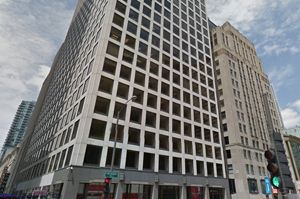Photographers Adopt New Approaches for Same-Sex Weddings
Queer and transgender couples often experience unique and subtle differences from those of heterosexual and cisgender pairs, and these can manifest in even seemingly innocuous settings such as their wedding photos. Wedding photographers must recognize that such complexities exist so that they can provide high-quality, customized services to their clients. As a result, more photographers have chosen to adopt and apply new approaches to shooting same-gender nuptials.
Tips for Posing and Shooting the Couple
Huffington Post writer Kelsey Borresen points out that many traditional wedding photography techniques are focused on shooting a male-female couple, particular those in which the woman wears a white gown and the man is wearing a dark suit or tuxedo. In same-sex weddings, that reality can shift largely due to the couple’s attire choices, especially when both people are wearing similar colors or styles of apparel. With visual composition and color both key elements in setting up and capturing an image, photographers must adjust their standard practices to create stunning images their clients love.
SLR Lounge contributor Jamie Davis Smith offers some great suggestion to her fellow industry professionals for shooting same-gender nuptial celebrations:
- Allow some visual space to separate the two individuals.
- Consider alternative poses and locations.
- Treat each half of the couple with equal attention and care.
- Don’t be afraid to use some traditional techniques.
- Permit the couple to pose themselves.
Also, Davis Smith recommends that photographers keep their eyes peeled for lovely candid moments that may not happen at a straight couple’s wedding: for instance, two grooms straightening each other’s ties or brides helping each other with makeup and hairpieces.
Special Interpersonal Dynamics to Keep in Mind
Photographers may observe that some same-gender pairs don’t easily express affection for each other in public settings. In a 2013 NPR piece, writer Amy Ta spoke with Kathryn Hamm and Thea Dodds, co-authors of the book “Capturing Love: The Art of Lesbian and Gay Wedding Photography.” As they provided sage wisdom and new recommendations for posing same-sex couples in wedding and engagement pictures, they divulged that some who’ve held hands with or kissed their partners in public have been met with hostility or violence. Moreover, others have felt reluctant to do the same in front of their families, particularly if they’re not “out” or fear being chastised.
Additionally, body language can reveal much about a person’s state of mind. Davis Smith advises that photographers pay attention to guests’ facial expressions when arranging shots or reviewing images captured after the event for inclusion in the couple’s final package. If someone appears visibly uncomfortable or unsupportive throughout the event, it may be best to avoid posing or shooting that individual. She also proposes that photographers should scope out private areas at the venue for shooting intimate moments between the couple. This can help them relax as well as provide a safe place to embrace or hold hands more freely.
For Best Results, Pick an LGBTQ-Friendly Vendor
Even if photographers have chosen to adopt these approaches, experience is a vital factor that shapes how a professional will capture your nuptials. If you’re a couple shopping for a photographer, your best bet is to specifically seek out a vendor who solely specializes in same-sex weddings or one with a significant number of LGBTQ clientele. Such professionals will not only support your event and planning efforts, but they will also film your nuptials with the distinctive approaches needed to produce wonderfully lasting memories you can cherish.
Every wedding is different, but cultural norms and relationship dynamics can add additional layers of nuance. This is doubly true when it comes to same-gender nuptials. From considerations in visual composition and posing to capturing family members at each happy event, savvy vendors are choosing and perfecting newer methods for giving each celebration its due on film.














